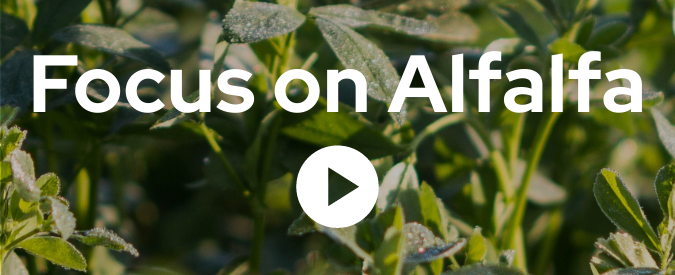Interest in biological products that aim to provide nitrogen to nonlegume crops by fixing atmospheric nitrogen for non-legume grain crops has increased in recent years. University of Wisconsin–Madison conducted field trials to examine if a popular gene-edited asymbiotic nitrogen fixer bacterial product, PROVEN 40, affected corn grain yield or corn grain yield response to nitrogen fertilizer.
Also commonly referred to as “stocking rate,” carrying capacity is the number of animals a parcel of land can support by providing adequate feed and retaining and recycling the nutrients they produce. In grazing systems, where livestock harvest their own feed and spread their own manure, carrying capacity is foundational to a long grazing season that results in healthy animals, healthy pastures, and a healthy ecosystem.
The third Focus on Forage webinar in the 2024 series, Focus on Annual Forages, features discussions around annual forage crops for Wisconsin farms, the nutritive value of and strategies around feeding annual forages on dairy farms, the nitrogen demand of cereal forages, and nitrogen carryover and rate planning considerations for 2024.
The recordings from the second Focus on Forage webinar in the 2024 series, Focus on Alfalfa, feature Scott Newell, Dr. Kim Cassida, Dr. Mark Renz, and Dr. Emily Bick.
The recordings of the first Focus on Forage webinar in the 2024 series, Focus on Forage Insurance, featuring Pamela Stahlke and Dr. Paul Mitchell.
A common misconception about livestock manure is that it is simply a waste product of the farm. However, manure is rich in many nutrients and is a valuable resource when applied back onto fields that can benefit from manure application. Research has demonstrated positive impacts to soil quality/health, crop production, and overall farm management when manure is managed effectively.
Most midwestern farms do not have a drought risk management plan. The topic of weather-resilient or extreme-weather crop production practices is in its infancy throughout the Midwest. Why? In Wisconsin it rains weekly, if not more in the summer, with an average annual rainfall of 34”. A flash drought occurred in 2023 as the result […]
The beginning of a new year is always a good time to consider ways to improve a farm for greater long-term success. A way to improve long-term success is to consider how to make a farm more resilient. In the constant pursuit of increased production, resilience is often overlooked, undervalued, and perhaps misunderstood. But what exactly is resilience?
The October 25, 2023 Badger Crop Connect session features discussions by Brenda Boetel, Professor and Department Chair of Agricultural Economics at UW-River Falls and Extension Agricultural Marketing Specialist.
















